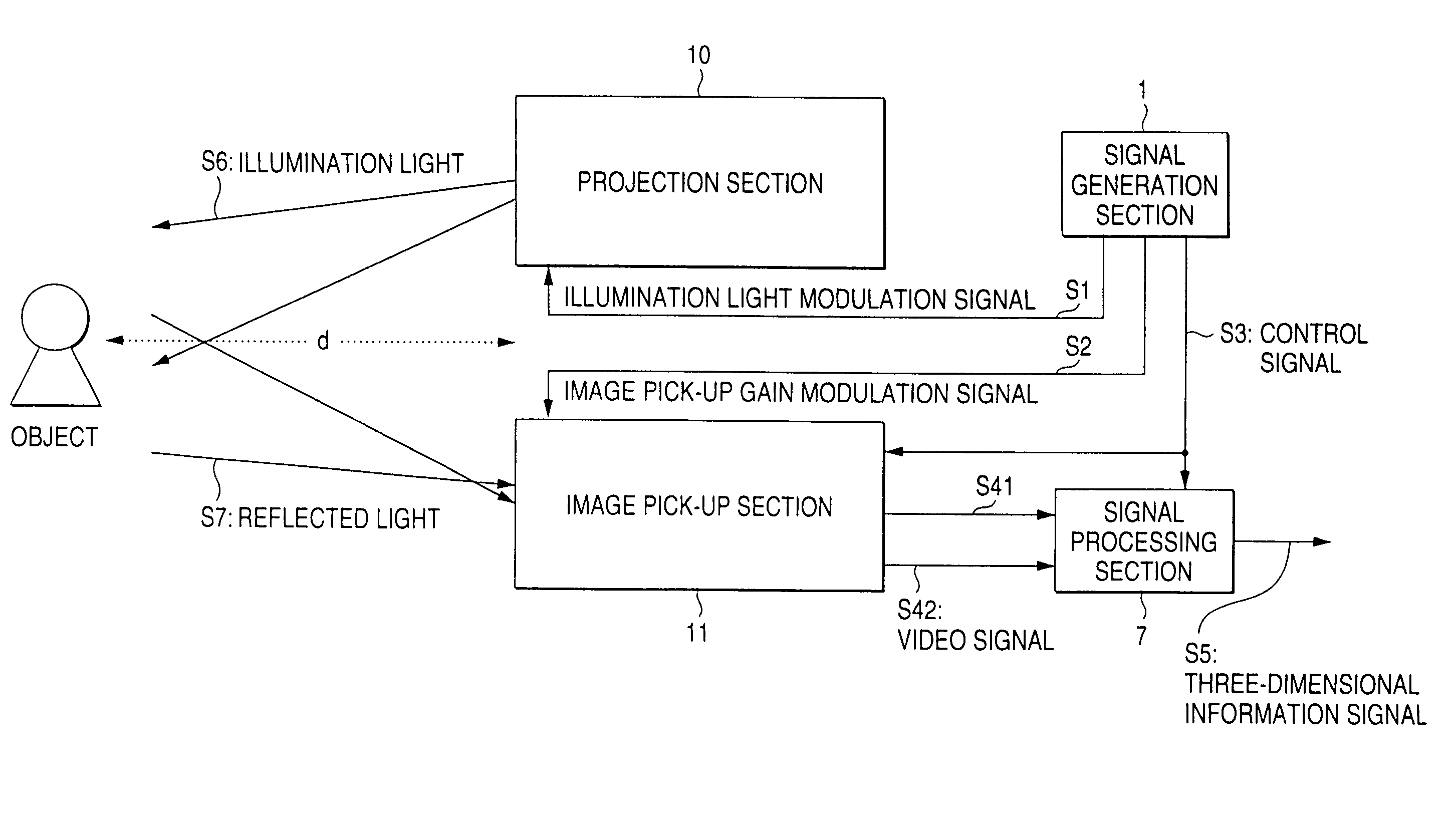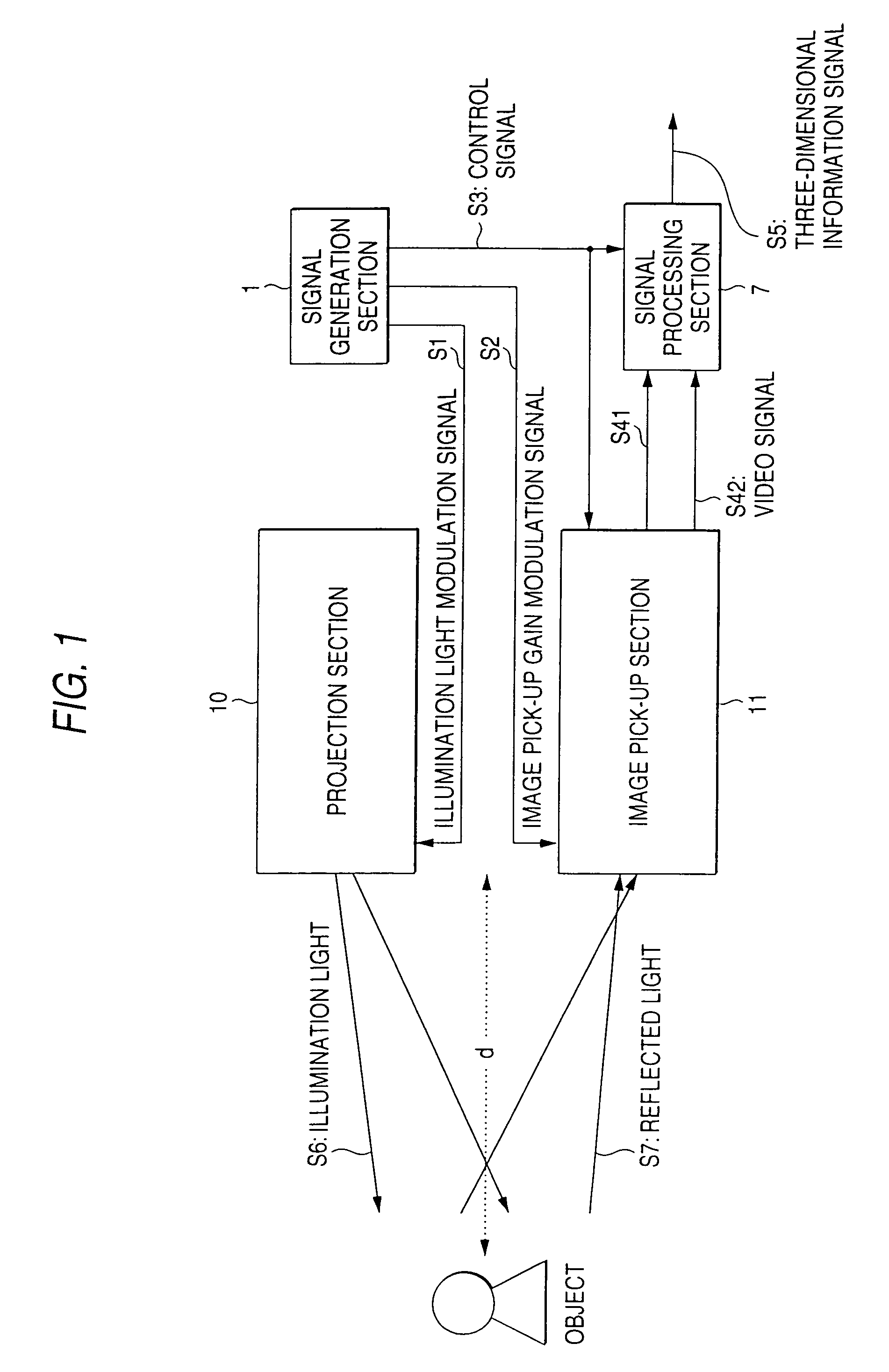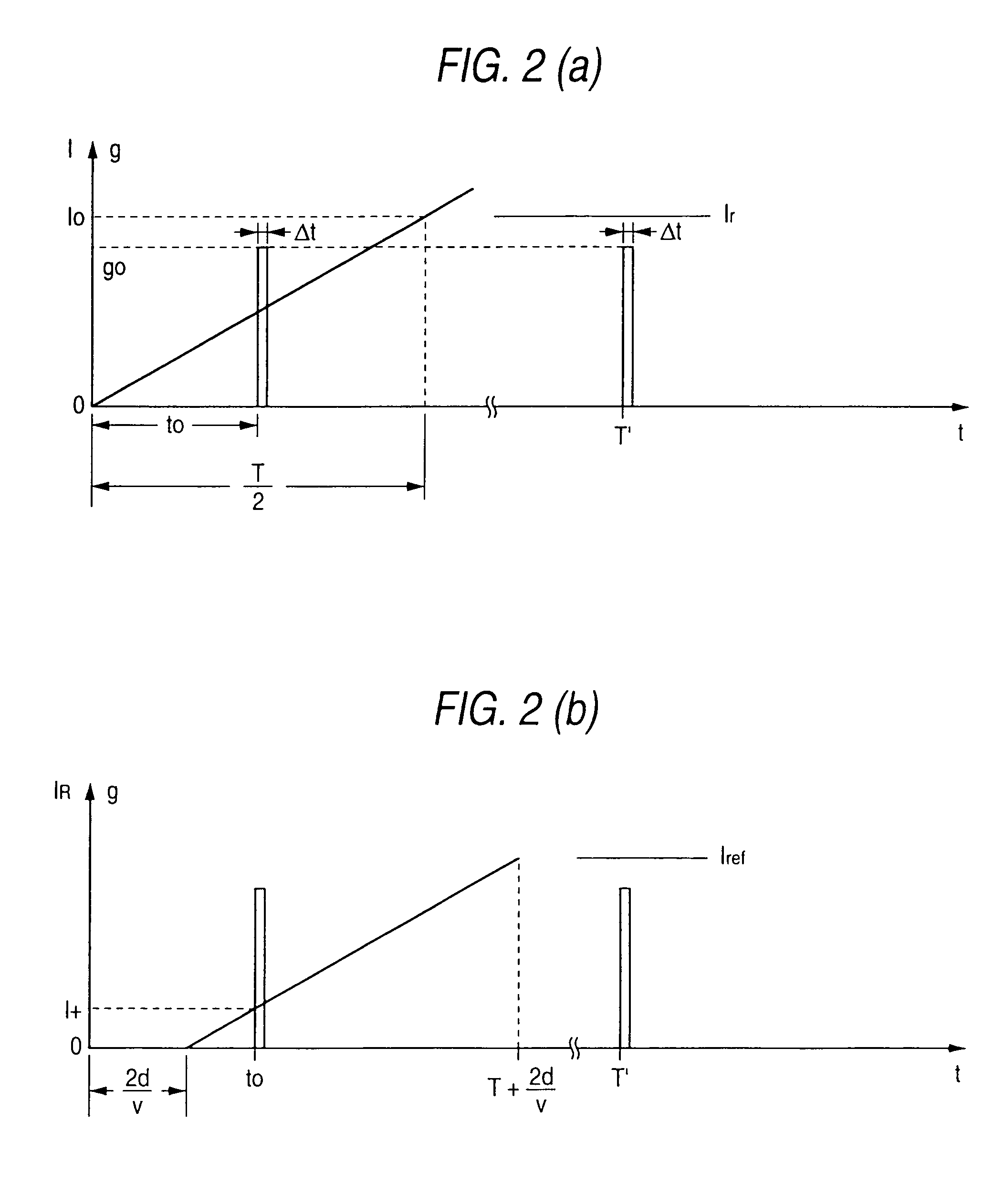Method and device for detecting three-dimensional information
- Summary
- Abstract
- Description
- Claims
- Application Information
AI Technical Summary
Benefits of technology
Problems solved by technology
Method used
Image
Examples
first embodiment
[0027]Various embodiments of the present invention will be described hereinbelow by reference to the accompanying drawings. FIG. 1 is a schematic diagram showing a three-dimensional information detecting device according to the present invention. The device comprises a projection section 10 capable of illuminating an object with illumination light S6 whose amplitude is modulated; an image pick-up section 11 which receives light S7 reflected from the object while changing an image pick-up gain with time and captures an optical image of the object; a signal processing section 7 for converting video signals S41 and S42 output from the image pick-up section 11 into a three-dimensional information signal S5; and a signal generation section 1 which produces an illumination light modulation signal S1, an image pick-up modulation signal S2, and a control signal S3. The specific configuration of these constituent elements will be described later.
[0028]The principle behind the three-dimension...
second embodiment
[0032]Referring to FIG. 4, a three-dimensional information detecting method according to the present invention will now be described. As shown in FIG. 4, the object is illuminated while the intensity of illumination light is modulated by employment of a triangular waveform. An optical image of reflected light is acquired twice; in other words, an optical image of reflected light whose intensity is I+ is acquired at time t=t0 for only a short period of time Δt (0(>0), and an optical image of reflected light whose intensity is I− is acquired at time t=to+T / 2 for only a short period of time Δt (0(>0). From Equations (1) and (6), we have R=I+g0I-g0=S(t0-2d / υ)I0-S(t0-2d / υ)(10)d=12υ{t0-I0S(R1+R)}.(11)
Let the wavelength of illumination light modulated by a triangular waveform be defined as λ=νT; then from S=I0 / (T / 2), we have d=12υt0-λ4(R1+R).(12)
Further, if t0 is set to a given value, distance “d” can be expressed as a relative distance with reference to a reference point dref...
third embodiment
[0035]A three-dimensional information detecting method according to the present invention will be described by reference to FIGS. 5 and 6. As shown in FIG. 5A, illumination light is modulated such that an image pick-up gain “g” is linearly increased (i.e., g=Ut). Further, an object is exposed to light which illuminates like a pulse with intensity I=I0 for only a short period of time Δt (0 / T). The image pick-up gain g+ obtained when the light reflected from the object that is spaced only distance “d” from the three-dimensional information detecting device has returned to the image pick-up device becomes g+=U(t0+2d / v). The intensity IrOg+ of an image resulting from the reflected light being captured is expressed by Equation (14). Ir0g+=σ(4πd2)2I0U(t0+2d / υ)(14)
Further, in order to eliminate the dependency of term σ / (4π2)2, the object is illuminated for a short period of time Δt from time T′ while the image pick-up gain “g” is uniformly maintained at g=gr. At this time, luminous...
PUM
 Login to View More
Login to View More Abstract
Description
Claims
Application Information
 Login to View More
Login to View More - Generate Ideas
- Intellectual Property
- Life Sciences
- Materials
- Tech Scout
- Unparalleled Data Quality
- Higher Quality Content
- 60% Fewer Hallucinations
Browse by: Latest US Patents, China's latest patents, Technical Efficacy Thesaurus, Application Domain, Technology Topic, Popular Technical Reports.
© 2025 PatSnap. All rights reserved.Legal|Privacy policy|Modern Slavery Act Transparency Statement|Sitemap|About US| Contact US: help@patsnap.com



